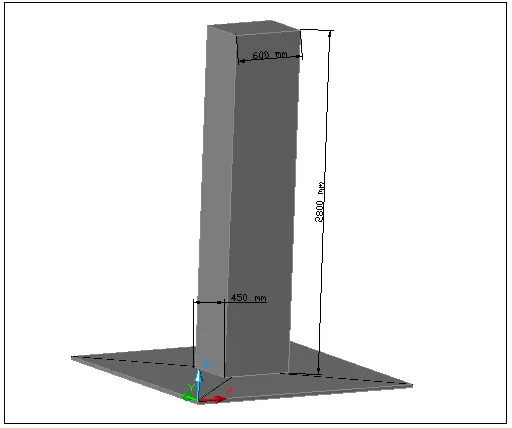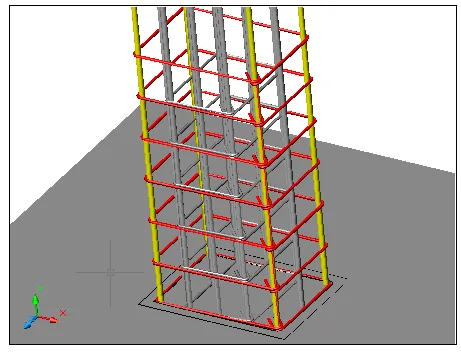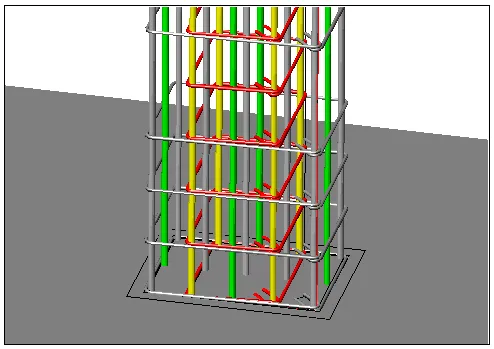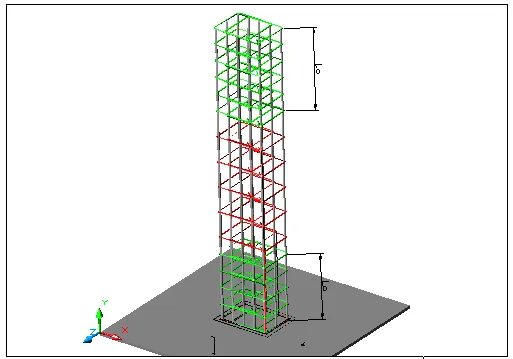Minimum steels in column

Hi, I'm Jhonny, and in this post I will describe the minimum steels in column, called stirrups and their arrangement in columns, for this we will not imagine a visit to a construction from which we will take an example central column, to better understand the Arrangement of columns according to the ACI standard, the dimensions of the column will be 450 mm x 600 mm as shown in the image.

The minimum diameter of the column stirrups according to the ACI standard is 10 millimeters, an outer stirrup must be placed containing the longitudinal steels of the corners, as shown in the following image.

On the other hand, internal stirrups containing the internal longitudinal steels must be placed, only one longitudinal steel bar not contained between two longitudinal bars contained by these stirrups is allowed.

Note that the stirrups near the slabs are less spaced than the stirrups at the center of the column, this is an earthquake resistant measure, the stirrups in the middle of the column are stirrups with ordinary arrangement for structures without lateral thrust due to earthquake or wind, while Since the abutments close to the slab have earthquake resistant arrangements, at the same time these abutments at the start and at the end of the column must have the following spacing.

The length along which these last stirrups are arranged is called Lo, this distance Lo has to meet three requirements according to the ACI standard.

At the same time, the maximum spacing between these stirrups called So must be the lesser of the following four requirements, according to the ACI standard.

In the center of the column the spacing of the stirrups called So must meet the lesser of three requirements according to the ACI standard.

As it is well known, the stirrups must have a plane at the end of 135 degrees, if we extract a stirrup from the column to know the minimum bending diameters, the corners must have a minimum bending diameter of 4 times the diameter, bone in in this case 40 millimeters and an extension of 75 millimeters or 6 times the diameter, whichever is greater, in this case we need 75 millimeters of straight extension of the steel after the hook.

The provisions shown here correspond to the minimum steel for column core, these stirrups must be capable of resisting the requesting shear according to the calculation, either by wind thrust or earthquake thrust or any other thrust to the side, in which case they may be increased. the diameters for that purpose or decrease to the spacing, I hope the data shown will be useful to you, thank you.